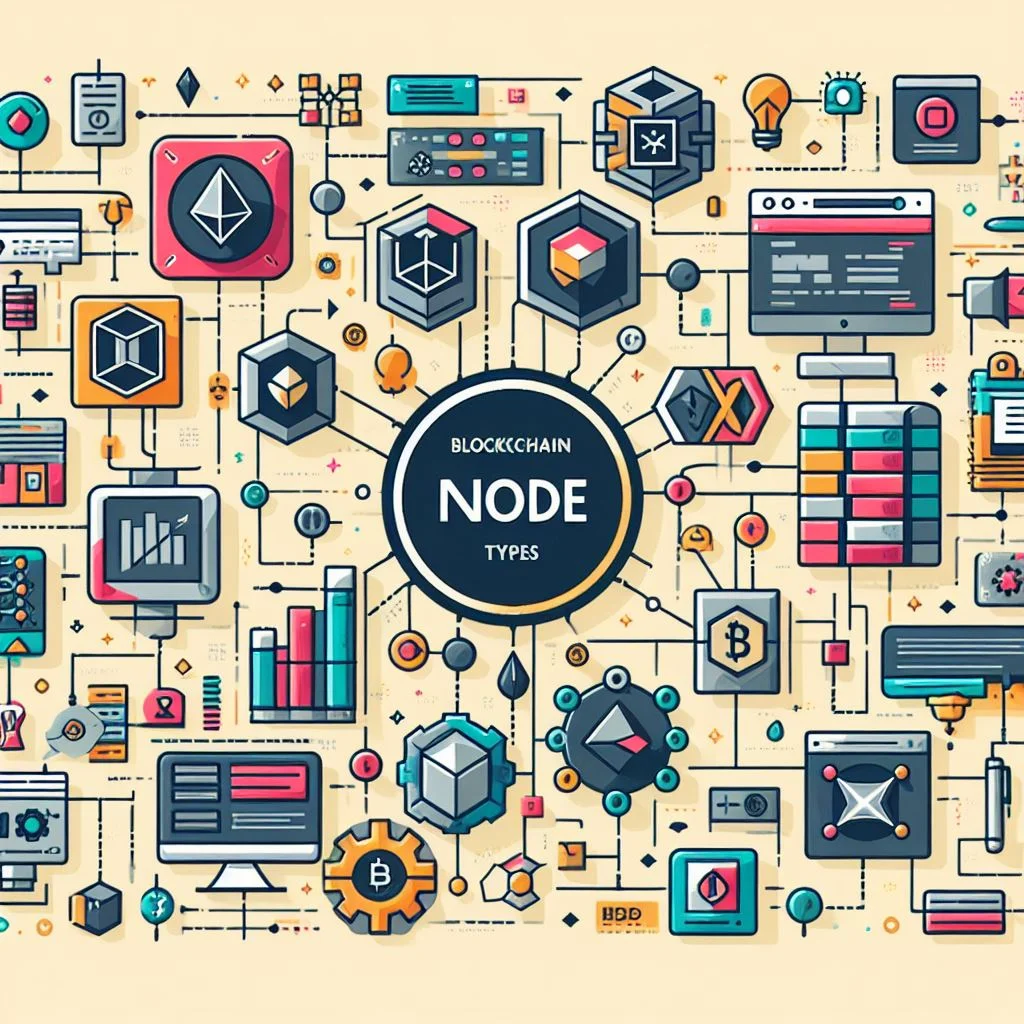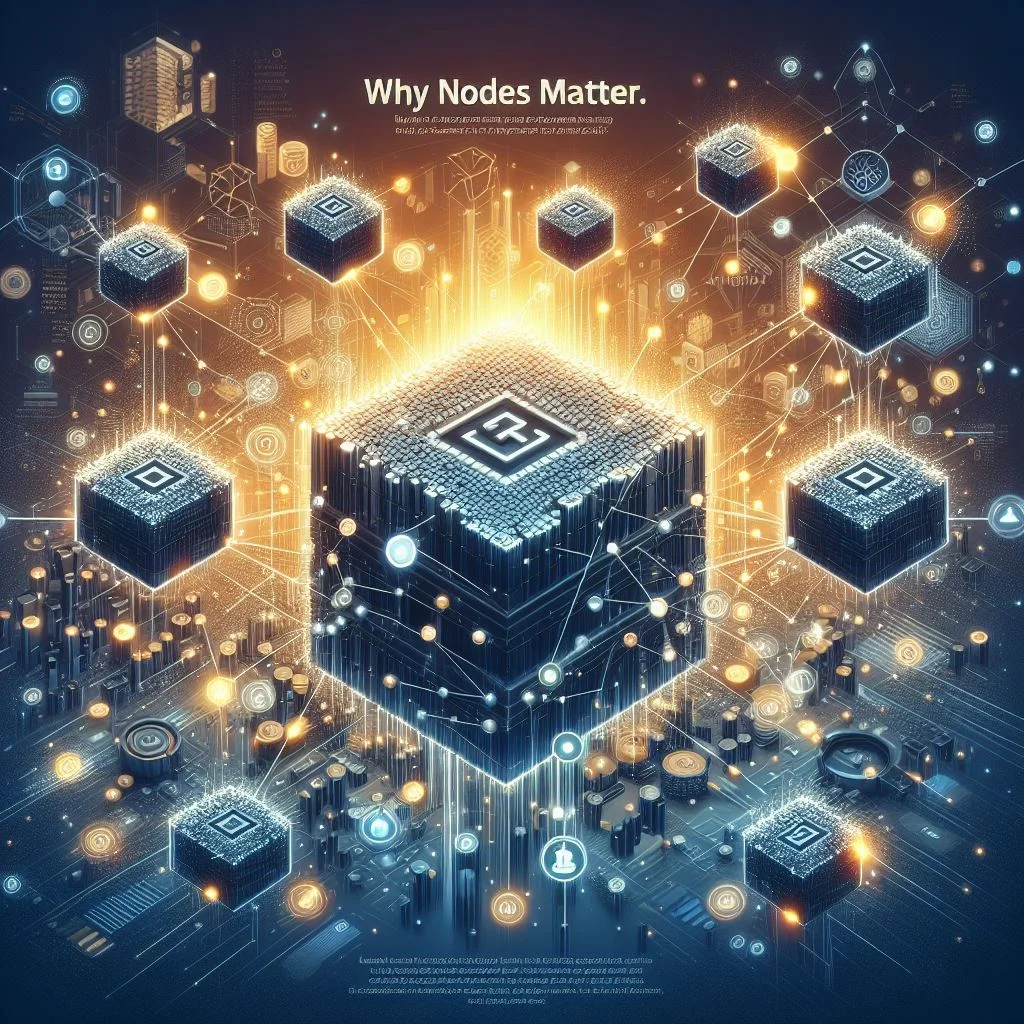What is a Node in Blockchain? Decoding Technology

A blockchain is a decentralized, distributed digital ledger that records transactions in a verifiable and permanent way. The backbone of any blockchain network is the nodes that make up that network. Nodes are the individual participants that store, broadcast and validate new transactions and blocks on the blockchain.
Understanding how nodes function and support the blockchain architecture is key to grasping the core concepts behind blockchain technology. This article provides a comprehensive overview of nodes and their integral role within blockchain networks.
The Basics of Nodes
At its most basic, a blockchain node is any computing device that connects to a blockchain network to perform essential functions. Nodes can be operated by individuals, companies, governments, institutions, or other entities. The node software enables the following key capabilities:
- Wallet Functionality – nodes provide users with wallet services to generate blockchain addresses to send and receive digital assets and monitor balances.
- Network Connectivity – nodes establish connection points to the blockchain network through peer-to-peer connections.
- Transaction Processing – nodes relay and propagate transactions initiated on the network by end users.
- Block Validation – nodes receive new block data and validate it through consensus mechanisms before adding it to the blockchain.
- Blockchain Storage – nodes store the full transaction history of the blockchain locally in a distributed fashion.
Nodes are essentially the workforce that powers blockchain networks by handling critical tasks. They enable users to interact with the blockchain, and they allow the decentralized network to run smoothly and securely.

Node Types
There are different types of nodes within blockchain networks, which take on different roles:
Full Nodes: Maintain a complete record of the blockchain transactions and fully enforce all consensus rules of the network. They independently validate all transactions and blocks.
Lightweight Nodes: Maintain only a subset of the blockchain transaction history. They rely on full nodes for broader validation.
Mining Nodes: Specialized nodes that compete to add new blocks to the blockchain by solving computational puzzles. May be full or lightweight.
Master Nodes: Perform added functionality beyond basic node duties, such as governance, handling payments, and enabling anonymization.
Supernodes: Similar to master nodes but generally run by trusted entities that require a stake and have higher resources.
Nodes are optimized for different tasks through configurations, hardware capabilities, staking requirements, and functionalities supported. But collectively, they power the blockchain.

Node Hardware and Software
Nodes can run on a variety of hardware, ranging from PCs, laptops, and Raspberry Pis to enterprise servers. The choice depends on network requirements and the desired node function. Resource-constrained devices may operate as lightweight nodes while networks like Bitcoin and Ethereum require full node-level hardware specifications for security.
In terms of software, nodes utilize client software that conforms to the standards of that particular blockchain network. For example, Bitcoin full nodes run Bitcoin Core software which handles all node operations like transaction/block verification, network connectivity, and wallet services according to Bitcoin protocols. Multiple client implementations may be available.
Why Nodes Matter
Nodes are the fundamental apparatus that enable blockchains to operate in a decentralized manner. Here are some reasons why they are essential:
- Without nodes verifying transactions, the blockchain would lose integrity and security as falsified transactions could pass through undetected.
- Nodes allow blockchain networks to run trustlessly peer-to-peer rather than relying on a central point of control. This is the essence of decentralization.
- Storing the blockchain across globally distributed nodes preserves the transaction ledger even if some nodes go offline. This eliminates single points of failure.
- Nodes make it possible for users across the globe to interact with the blockchain via local network access points instead of through centralized servers.
- A higher number of nodes makes the network harder to manipulate or attack and improves ecosystem resiliency through redundancy.
In summary, nodes enable the core functionality of blockchains – without nodes, there is no blockchain.

Consensus Mechanisms
For a blockchain to update its distributed ledger in a secure, consistent manner, nodes must agree on which transactions are valid and the order in which they occur. This agreement is reached through consensus mechanisms like proof-of-work and proof-of-stake which are enforced by nodes.
Proof-of-Work: Miner nodes compete to solve cryptographic puzzles that require significant computational work. The first to solve the puzzle validates the block. Bitcoin pioneered this.
Proof-of-Stake: Nodes ‘stake’ funds as collateral to validate new blocks. The blocks they produce are accepted if the staked assets ensure the nodes are invested in the health of the network. Ethereum is transitioning to this.
Other mechanisms like practical Byzantine fault tolerance allow block validation based on nodes reaching quorum. Consensus ensures blockchain consistency.
Node Incentives
Nodes devote significant resources to fulfilling blockchain network responsibilities. Incentives drive nodes to operate with integrity for the health of the overall ecosystem. The main incentives are:
Mining Rewards: Compensate mining nodes for expending computational resources to verify blocks and embedded transactions. Bitcoin mining nodes receive the block reward (currently 6.25 BTC) plus transaction fees for each block mined as an incentive to keep mining.
Transaction Fees: Nodes may charge a small fee for processing transactions as compensation for the resources utilized in relaying, validating, and storing transaction data on the blockchain.
Staking Rewards: In proof-of-stake blockchains, staking nodes receive rewards (similar to interest) in proportion to the amount staked as an incentive to validate blocks correctly.
Governance Rights: Node operators may gain voting rights on future blockchain developments and key decisions, with voting power tied to staking amounts or the longevity of node operation.
Along with intrinsic ideology-based motivations like contributing to a decentralized network, these incentives drive nodes to strengthen blockchain networks.
Node Requirements
Blockchains have node requirements to ensure adequate resources for optimal network operations. While requirements vary, common prerequisites include:
- Hardware specifications (storage, memory, processing capability, bandwidth) to handle associated blockchain workloads
- Consistent uptime and connectivity to allow seamless transacting
- Deposits, staking, or collateral for nodes integral to governance and consensus
- KYC verification for permissioned blockchains with accredited node participation
- Cybersecurity controls to prevent nodes from being threat vectors
Node requirements aim to guarantee nodes build network capacity and are incentivized toward behaviors that will sustain blockchain integrity.
Risks and Attacks
While nodes are the backbone of blockchain networks, they are also potential targets for attacks and manipulation. Some key associated risks include:
- Colluding nodes can compromise consensus and introduce falsified transaction records or double-spending by violating rules. This undermines trust.
- A 51% attack occurs when a single entity gains sizable control of node resources on proof-of-work blockchains enabling network control.
- Sybil attacks involve bad actors spinning up numerous nodes to gain disproportionate influence and skew governance.
- DDoS attacks can bombard nodes with traffic to disrupt availability and services on the network.
- Node bugs, outages, and misconduct can negatively impact network operations if adequate redundancy through sufficient decentralized nodes is lacking.
Robust blockchain networks are resilient against node-based exploits by having decentralized node distributions, staking mechanisms, and detecting misbehaving nodes.
Network Node Counts
Here are approximate node counts for some major blockchain networks as of January 2023:
- Bitcoin: 15,000 full nodes worldwide
- Ethereum: 8,000 full nodes worldwide
- Cardano: 3,000 full nodes worldwide
- Solana: 1,200 full nodes worldwide
- Polkadot: 1,300 full nodes worldwide
Higher node counts imply greater decentralization and distribution of blockchain operations across a broader base. Bitcoin and Ethereum have the most nodes due to longevity and network value.
Running a Node For many blockchain networks, anyone can support the network by running nodes using consumer hardware and platforms like Casa Node. Nodes connect to peers to integrate with the blockchain ecosystem and leverage available APIs to monitor operations. While power users run multiple nodes, typical node operators run one. Many crypto exchanges and vendors also operate nodes. Both individuals and entities globally running nodes contribute to decentralization.

Conclusion
Nodes are the cornerstone of blockchain networks underpinning their functionality, security, and distributed nature. These networked participants engage in storing blockchain data, validating transactions, enabling wallet services, and sustaining the broader network. While nodes carry both substantial responsibilities and associated risks, they are incentivized through rewards to contribute constructively to the ecosystem. Understanding how nodes work provides critical insight into the inner workings of blockchain technology and its decentralized foundations.
Frequently Asked Questions on Nodes in Blockchain
Can anyone run a blockchain node?
For permissionless blockchain networks like Bitcoin and Ethereum, anyone with the right hardware and connectivity can freely download and run node software to operate as a node. Permissioned blockchains may restrict nodes to accredited participants.
How many nodes are needed for a blockchain network?
There is no set number, more nodes imply greater decentralization and security. Larger networks like Bitcoin and Ethereum have 10,000+ nodes while smaller chains may only have hundreds or thousands of nodes.
What is required to run a full node?
To run a full node, dedicated hardware like specialized servers, ample network bandwidth, around 250+ GB of initial storage and high uptime connectivity are generally required along with conforming to blockchain protocols.
What are master nodes?
Master nodes are specialized nodes that provide added functionality beyond transaction processing such as enabling governance decisions, mixing services for privacy or handling payments. They stake collateral and meet heightened requirements.
Can failed nodes compromise a blockchain network?
Short isolated node outages will not disrupt blockchain networks as long as adequate redundant nodes exist to preserve operations and transaction history. But widespread node failures could cripple network capacity.
Are nodes prone to cyber attacks?
Like any connected systems, nodes are vulnerable to cyber attacks such as DDoS and need to incorporate strong protections like firewalls. Protocols like staking minimize misbehaving node risks. High node counts limit attack impacts.
How do nodes generate income for operators?
Nodes earn income through block rewards, transaction fees and staking returns. Fees and staking yields in particular provide fairly stable recurring node income proportional to the size of stake and network usage.
Do slower nodes impact blockchain networks?
Slower nodes that lag in updating state from new blocks/transactions can slow overall network performance and responsiveness. Blockchains aim to incentivize nodes to provide sufficient resources and bandwidth.
How are nodes identified on a blockchain network?
Nodes are generally identified via pseudonymous public keys/addresses assigned when the node software loads the node’s wallet. These serve as permissionless node identities that can receive incentives.
Can governments shut down blockchain nodes?
Governments can attempt to shut down nodes within their jurisdictions but have limited ability to control nodes in foreign decentralized jurisdictions, a core strength of blockchain networks.





